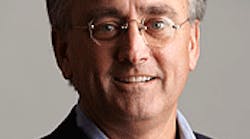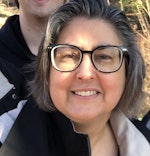Understanding modern systemic diseases through a study of anthropology
Chicago pediatric dentist Kevin Boyd, DDS, MS, has pioneered a brand new, groundbreaking medical theory called Darwinian Dentistry. By studying the prehistoric fossil remains of our human ancestors, he has developed an innovative hypothesis about the past and the future of children’s health care. Dr. Boyd, who holds an advanced degree in human nutrition and dietetics and is also working on a master’s in anthropology, has a passion for the study of medical evolution. The new approach of Darwinian Dentistry offers a useful framework for understanding modern systemic diseases. This advancement in attitude toward facial structure, bone growth, and oral hygiene can directly impact a child's sleeping habits, jaw growth, crooked teeth, and breathing patterns. Through his research, Dr. Boyd has discovered a link between infant breast-feeding and these conditions.
Dr. Boyd recently took time to answer some questions about his new theory and its impact on the way he treats the pediatric patients in his dental practice.
Please define Darwinian Dentistry and explain your involvement in this new medical theory.
Dr. Boyd: Evolutionary Medicine (EM), also known as Darwinian Medicine, is a new approach providing a useful framework for understanding modern systemic diseases. The EM paradigm applied in the field of dentistry is called Evolutionary Oral Medicine, or Darwinian Dentistry (DD).
What are some key points that Darwinian Dentistry reveals based on recent studies?
Dr. Boyd: While the DD educational paradigm is fairly new, there are a number of published studies that support its premise. For example, Page Caufield has shown that Mutans streptococcus species have co-existed with humans since long before their first migrations out of Africa some 70,000 years ago, yet tooth decay doesn't appreciably appear in the human fossil record until after the Agricultural Revolution about 10,000 to 12,000 years ago. Another example of the DD premise being supported by current scientific research is centered around the relatively recent appearance of malocclusion in humans. According to Corruccini, other than some prehistoric evidence of incisor crowding, there is very little evidence of significant skeletal malocclusion in the ancient human fossil and/or pre-Industrial skeletal records. And finally, with respect to early periodontal disease/gingivitis, individuals who didn't brush their teeth for several weeks under controlled experimental conditions while consuming a low-sugar/high-fiber Paleolithic diet experienced less gingival inflammation and bleeding than did a matching control group who had consumed a high-sugar/low-fiber diet under the same conditions.
Who or what has influenced the direction of your research the most?
Dr. Boyd: The single greatest influence on my decision to alter my career path in the direction of biological anthropology research has been Dr. John Mew, an anthropologically inclinedorthodontist from England. During the mid-20th century, Mew studied the occlusions of several ancient Roman skulls at the British Museum of Natural History and was then compelled to develop his hypothesis that malocclusion was a dietary- and lifestyle-related disease that didn't seem to afflict un-Westernized cultures.
Who is involved in this ongoing research, and what are their roles?
Dr. Boyd: I am currently developing two different research protocols: The first is for my thesis project at Northeastern Illinois University's Department of Anthropology and will be conducted in the archived collection of chimpanzee skulls at the Field Museum of Natural History (FMNH) in Chicago. There are two distinct groups of chimp skulls at the FMNH — those that had been bred in captivity and fed within Chicago's zoos throughout the 20th century and those that had been bred and fed in the wild over the same time span. In line with Mew and Corruccini's genomic-environmental mismatch hypothesis of modern malocclusion etiology, captive, usually orphaned, animals that had been artificially nursed and weaned to nonwild commercially processed zoo diets might be expected to have less well-developed occlusions than their wild counterparts who had been naturally nursed and weaned to a wild/unprocessed diet.
The second line of research focuses on a clinical application of Dr. Mew's early orthodontic treatment strategy called Orthotropics. The trial will involve utilization of Orthotropics (Biobloc) as a nonsurgical maxillomandibular advancement treatment option for young children diagnosed with severe obstructive sleep apnea (OSA) and will be conducted with Dr. Stephen Sheldon, who is director of the Department of Sleep Medicine at Children's Memorial Hospital in Chicago. This proposed prospective study aims to gain additional data to support previous observations that Biobloc-Orthotropic treatment can indeed promote permanent anatomical dimensional changes in the posterior airway space of severely compromised OSA patients. (Note: the Orthotropic premise is centered around the observation that children who have well-developed palates and good oral posture, either from birth or secondarily as a result of orthotropically guided early treatment strategies — e.g., Biobloc appliances, myofunctional therapy — will ultimately have the appropriate oral architecture that will be conducive to lifelong obligate nasorespiratory ability, healthy/restorative sleep patterns, attractive/well-balanced faces, and well-aligned teeth.)
How does Darwinian Dentistry affect the way you treat children in your pediatric dental practice?
Dr. Boyd: When viewed from an evolutionary/Darwinian perspective, the most common pediatric oral health diseases (e.g., caries, gingivitis, and malocclusion) are nearly completely preventable. That's why our not-so-distant ancestors were able to remain nearly completely unafflicted by all three of these oral public health maladies. With appropriately targeted evidence-based preventive (e.g., sugar-overconsumption reduction, encouragement of breast-feeding over bottle-feeding, and Baby-Led Weaning technique with unprocessed foods) and treatment strategies (very early palatal expansion, myofunctional therapy), theoretically, the prevalence of caries, gingivitis, and malocclusion could be significantly lessened, if not nearly totally eliminated, in one or two generations.
How do you see this research impacting future research?
Dr. Boyd: With recent advances in the development of the evolutionary medicine curriculum in some medical schools, combined with an increased general understanding about the newly emerging scientific discipline of epigenetics, viewing oral health and disease from an evolutionary perspective (i.e., Darwinian Dentistry) should become a much easier concept for people to grasp; at present, it seems somewhat vague. The main reason the EM/DD concept is difficult to grasp is likely due to the fact that health-care professionals are not required to take courses in premed/predent courses in evolutionary biology and/or anthropology, and thus don't really understand how evolution by natural selection really works. Hopefully this will change in our lifetime.
What do you feel is the biggest benefit Darwinian Dentistry brings to the profession?
Dr. Boyd: The Darwinian Dentistry educational model provides a framework for dental professionals to explore the question, What is it about the industrialization of a given society that seems to promote a high prevalence of common dental problems such as caries, periodontal disease, and malocclusion? More as a new way of looking at dental disease causations — rather than a new way of practicingdentistry — the Darwinian Dentistry paradigm inspires new perspectives for how oral health problems can be researched, prevented, reversed, and treated.
What is the main objection this theory must counter?
Dr. Boyd: Most likely the inevitable resistance to integrating Darwinian Dentistry into the current dental school curriculum will be (at least) three-fold:
1. The curriculum is already too crowded.
2. Resistance to change per se can often be a difficult task.
3. Because Darwin's main 1859 premise of “evolution by natural selection” often seems to clash with many Western religious traditions, evolutionary biology is not widely taught in the U.S. school system and thus is still a very poorly understood concept by most American predental and dental students.
Where should readers go for more information on how to become involved in the advancement of this new theory?
Dr. Boyd: A great resource for learning about the exciting new field of evolutionary medicine is at the Evolution & Medicine Review website. You can also read Darwinian Dentistry Parts 1 and 2 by Dr. Kevin Boyd on the Journal of the American Orthodontic Society's website.
You may contact Dr. Boyd by email at [email protected].







